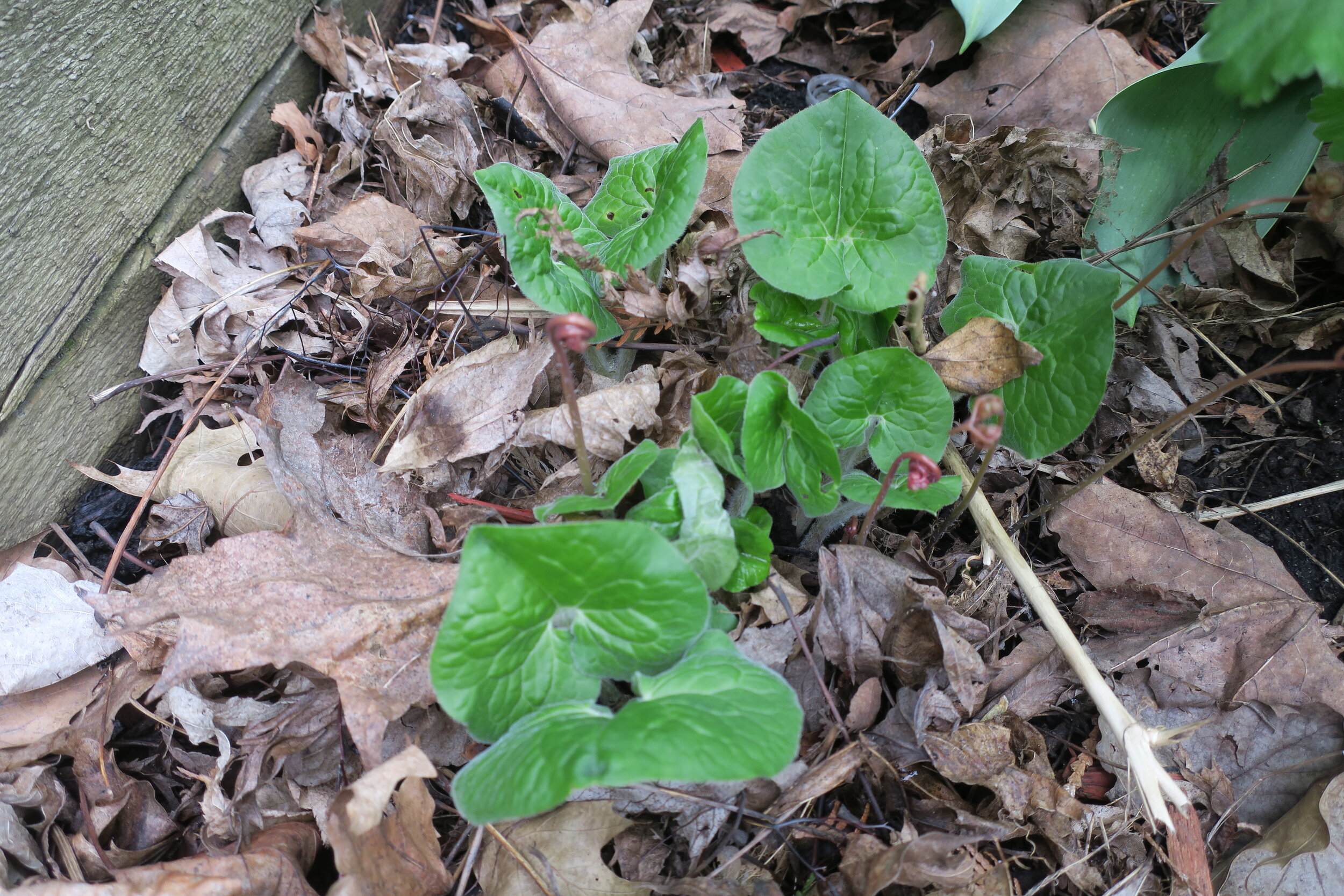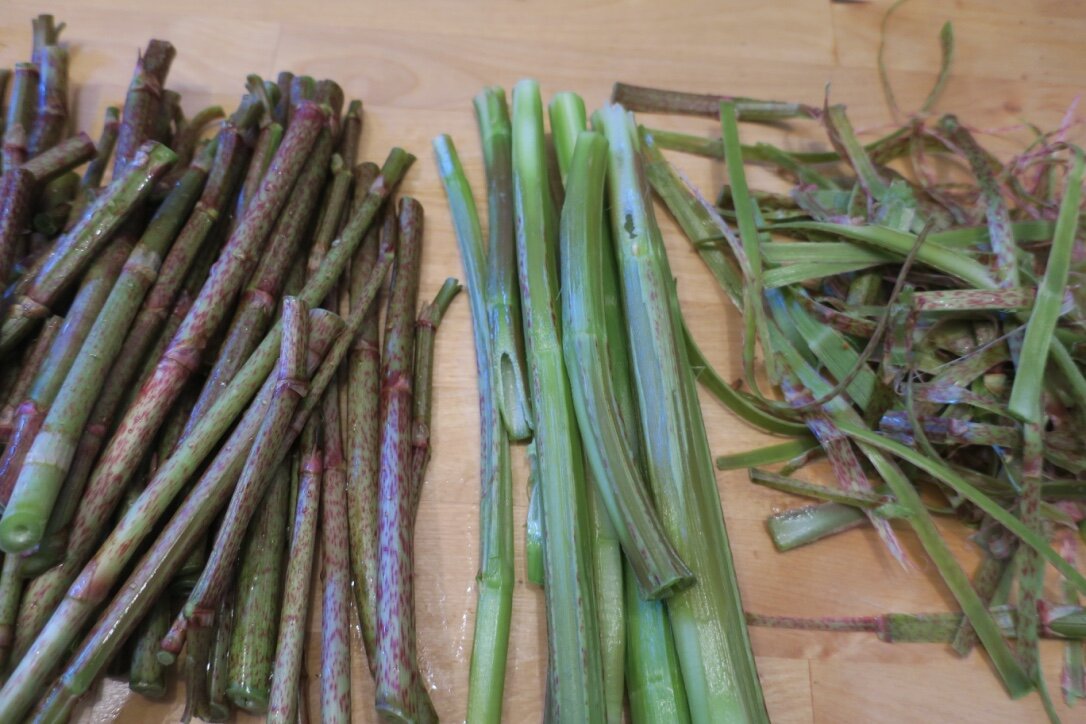I often hear from people who worry that if they leave the leaves on their beds over the winter that the plants won’t be able to grow through this thick layer. Here’s some garden proof that woodland plants will emerge just fine! And I adore this combination of wild ginger (Asarum canadense) and naidenhair fern (Adiantum peltatum). I piled dead leaves on the bed in the autumn, left them over the winter, and didn’t do a thing to the bed in the spring—I just let the plants do their thing!
The Backyard: Originally and Now
When I first moved in, eleven years ago, the backyard had a few trees (a sugar maple, redbud and chokecherry), a largish area of lawn, and some non-native shrubs and perennials.
April 2010
A July 2010 visit with my niece Deanna and nephew Christopher in my new backyard.
Rather than cut the grass, I grew pumpkins in the lawn.
And I planted native trees and shrubs, lots of them: sycamore, eastern hemlock, eastern white cedar, serviceberry, pussy willow, alternate-leaved dogwood, 3 paw paws, 3 staghorn sumacs, and American chestnut. (A blue beech came later.)
For the next few years, while the trees were growing and there was still lots of sun, I didn’t really start transforming the understory. I grew a lot of vegetables instead, some in raised beds.
As the trees filled in, the yard started to feel like a forest, and years of building the soil with loads of dead leaves ensued that native woodland perennials could thrive.
Here’s the backyard woodland garden in mid-June this year.
The sycamore, which I planted in 2010 (and can be seen in the photo before this one, in the foreground on the right, with light green leaves), is now the 40-foot-tall beauty with a big honking trunk in this photo. I’m amazed by how much it has grown in just 11 years.
Invasive Knotweed for Dessert
There's a local patch of very entrenched knotweed (an invasive species), and I decided to do my bit by cutting the expanding shoots when they were young, and eating them. I peeled and stewed them like rhubarb, and they made a delicious compote. Added to oatmeal; also mixed it with whipped cream for a great dessert. Tastes a lot like rhubarb. (Only pick from areas you know aren't sprayed with herbicides!)
A local abandoned lot is full of knotweed.
I removed the leaves and peeled the young stalks.
After stewing the stalks with some sugar and water, I added whipped cream and topped the dessert with some redbud flowers.
Is Plant Rescue One Answer?
It’s heartbreaking to do presentations about the importance and value of planting native plants and to know that people will leave the presentation excited but having an impossible time finding native woodland plants for sale at nurseries. These plants take such a long time to grow…they are precious beyond words.
At the same time, woodland sites are being destroyed left, right and centre for development, and the plants they harbour are bulldozed, treated like garbage.
While participating in a plant rescue this spring, all I could think was that somehow we need to fix this.
It simply must be a regular feature of the development process that plants are salvaged and distributed to public projects.
Hundreds of the delicate spring ephemeral toothwort, a native woodland plant that is rarely available at nurseries and yet that many gardeners would love to plant, would have been bulldozed if they hadn’t been rescued at this site.
I know that some people worry that something like this would encourage more habitat destruction. Folks, it’s already happening and the pace is relentless.
If a site can’t be saved, its plant bounty should be, at the very least.
I’m not sure where to start with this, or who else is working on a policy to fix this madness, but I feel a project brewing…
A drop in the bucket…



















